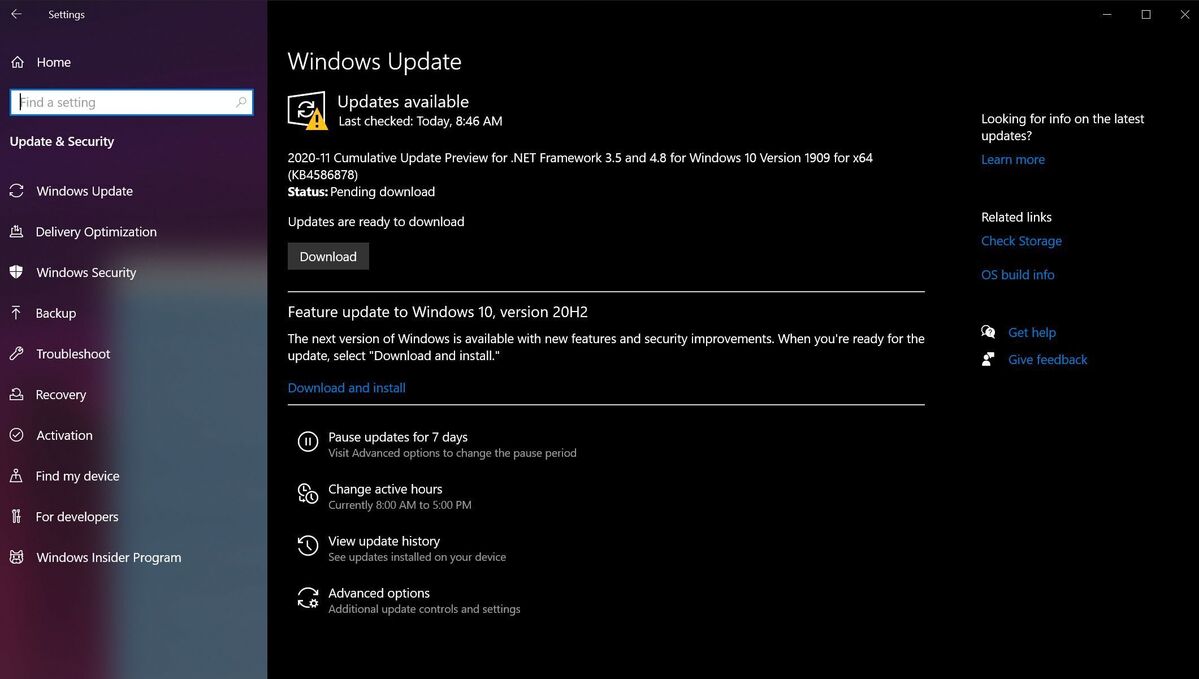In the world of computer systems, compatibility is a crucial factor. Many times, we find ourselves needing to maintain compatibility with legacy operating systems or software. One way to achieve this is by enabling the Compatibility Support Module (CSM) in the system setup. However, if your system operates solely with modern operating systems and hardware, disabling CSM can provide a pure Unified Extensible Firmware Interface (UEFI) experience with optimized performance and advanced features.
To disable CSM and embrace the benefits of UEFI, follow these steps:
1. Open the “Command Prompt” with administrator privileges. You can do this by searching for “Command Prompt” in the Start menu, right-clicking on it, and selecting “Run as administrator.”
2. Once the Command Prompt is open, issue the following command: `mbr2gpt.exe /convert /allowfullOS`. This command will initiate the conversion of the system’s Master Boot Record (MBR) to the newer GUID Partition Table (GPT) format, which is required for UEFI.
3. After the conversion is complete, shut down your computer and reboot it.
4. During the boot process, you’ll need to access your system’s BIOS settings. The specific key or combination of keys to enter the BIOS varies depending on the manufacturer and model of your computer. Common keys include F2, Del, Esc, or F10. Refer to your computer’s manual or the manufacturer’s website for the correct key(s) to enter the BIOS.
5. Once you’re in the BIOS settings, look for an option related to the boot mode or boot configuration. This option may be named differently depending on the manufacturer, but it should mention “UEFI” or “Legacy” modes. Change this setting to “UEFI mode” to enable the full benefits of UEFI.
It’s important to note that UEFI is a modern standard that supports the latest hardware components with newer technologies, like Trusted Platform Module (TPM). UEFI also typically runs on 64-bit operating systems, while CSM supports 16-bit and 32-bit operating systems, such as Windows XP, Windows 2000, Windows 95, and others.
Now, let’s address the question of whether Windows 11 requires UEFI. Microsoft has made the decision to leverage the advances of UEFI in Windows 11 to offer enhanced security for users. As a result, Windows 11 MUST run with UEFI and is not compatible with BIOS or Legacy Compatibility Mode. This means that if you plan on upgrading to or installing Windows 11, you’ll need to ensure that your system is running in UEFI mode.
By disabling CSM and embracing UEFI, you can take full advantage of the modern features and security enhancements offered by UEFI. However, it’s important to consider the compatibility requirements of any legacy operating systems or software you may rely on before making this change. Always consult your computer’s manual or the manufacturer’s website for specific instructions and recommendations regarding your system’s setup.

Is It OK to Disable CSM in BIOS?
It is generally okay to disable Compatibility Support Module (CSM) in the BIOS if your system operates solely with modern operating systems and hardware. Disabling CSM can provide a pure UEFI (Unified Extensible Firmware Interface) experience with optimized performance and advanced features.
Here are a few reasons why it may be beneficial to disable CSM:
1. Improved Performance: UEFI firmware offers faster boot times and overall system performance compared to legacy BIOS. Disabling CSM allows your system to fully utilize the capabilities of UEFI, resulting in better performance.
2. Enhanced Security: UEFI provides more robust security features such as Secure Boot, which helps protect against malware and unauthorized firmware or operating system modifications. Disabling CSM ensures that these security features are fully utilized.
3. Future-proofing: As technology advances, legacy operating systems and software may become outdated or unsupported. By disabling CSM, you are embracing the modern UEFI standard and ensuring compatibility with future hardware and software releases.
However, it’s important to note that there are scenarios where enabling CSM may be necessary. These include:
1. Legacy Operating Systems or Software: If you rely on older operating systems or software that are not compatible with UEFI, you may need to enable CSM to ensure compatibility and proper functioning.
2. Hardware Compatibility: Some older hardware components may only work with legacy BIOS and may require CSM to be enabled. If you have such hardware, disabling CSM may result in compatibility issues.
If your system operates solely with modern operating systems and hardware, disabling CSM can provide a pure UEFI experience with optimized performance and advanced features. However, if there is a need to maintain compatibility with legacy operating systems or software, enabling CSM is necessary.
How Do You Change From CSM to UEFI?
To change from CSM (Compatibility Support Module) to UEFI (Unified Extensible Firmware Interface), you can follow these steps:
1. Open “Command Prompt” with administrator privileges: Right-click on the Start button and select “Command Prompt (Admin)”.
2. In the Command Prompt window, issue the following command: `mbr2gpt.exe /convert /allowfullOS`. This command converts the disk from MBR (Master Boot Record) to GPT (GUID Partition Table) without data loss, allowing a smooth transition to UEFI.
3. After the conversion process completes, shut down your computer.
4. Turn on your computer and immediately enter the BIOS settings. The key to access the BIOS may vary depending on your computer manufacturer, but commonly used keys are Del, F2, or F10. Refer to your computer’s documentation or manufacturer’s website for specific instructions.
5. Once in the BIOS settings, navigate to the “Boot” or “Startup” tab. Look for an option related to boot mode or firmware settings.
6. Change the boot mode or firmware settings from CSM or Legacy mode to UEFI mode. The exact wording may differ based on your BIOS version, but it should include “UEFI” or “UEFI Only” options.
7. Save your changes and exit the BIOS. This action will restart your computer.
8. Your computer will now boot in UEFI mode, taking advantage of the features and security benefits it offers.
What is the Difference Between UEFI and CSM?
UEFI (Unified Extensible Firmware Interface) and CSM (Compatibility Support Module) are two different firmware interfaces used by computers to boot up the operating system. While both serve the same purpose, there are several key differences between them:
1. Hardware Support:
– UEFI is a modern standard that supports the latest hardware components and newer technologies such as TPM (Trusted Platform Module). It provides better compatibility with newer devices and peripherals.
– CSM, on the other hand, is designed to support older hardware components and is mainly used for backward compatibility with legacy operating systems and devices.
2. Operating System Support:
– UEFI usually runs on 64-bit operating systems. It provides support for modern operating systems like Windows 10, macOS, and Linux distributions.
– CSM supports both 16-bit and 32-bit operating systems, making it compatible with older versions of Windows such as Windows XP, Windows 2000, Windows 95, and other legacy operating systems.
3. Booting Process:
– UEFI has a more advanced booting process compared to CSM. It supports a secure boot feature that verifies the integrity of the operating system during startup, ensuring that only trusted software is loaded.
– CSM follows a more traditional booting process and lacks the secure boot feature. It primarily relies on the legacy BIOS (Basic Input/Output System) to initialize hardware and load the operating system.
4. User Interface:
– UEFI provides a graphical user interface (GUI) that allows users to interact with the firmware settings using a mouse and keyboard. It offers a more user-friendly and visually appealing interface.
– CSM typically uses a text-based interface, often referred to as the BIOS setup utility. It requires users to navigate through menus using the keyboard and has a more basic and less visually pleasing interface.
UEFI is a modern firmware interface that supports the latest hardware and operating systems, while CSM is primarily used for backward compatibility with older hardware and legacy operating systems. UEFI offers advanced features like secure boot and a graphical user interface, whereas CSM relies on the legacy BIOS and has a more basic interface.
Is Windows 11 a UEFI or CSM?
Windows 11 requires UEFI (Unified Extensible Firmware Interface) and does not support CSM (Compatibility Support Module) or Legacy Compatibility Mode. UEFI is a modern firmware interface that has replaced the traditional BIOS (Basic Input/Output System) in recent years. Microsoft has made the decision to exclusively support UEFI in Windows 11 to take advantage of its improved security features and performance benefits.
Here are some key points to understand about Windows 11 and UEFI:
1. Enhanced Security: UEFI provides advanced security features, such as Secure Boot, which helps protect against unauthorized operating system or firmware modifications. By relying on UEFI, Windows 11 can ensure a more secure environment for users.
2. Faster Boot Times: UEFI offers faster startup speeds compared to BIOS. It supports modern technologies like Fast Boot, which reduces the time it takes for the system to power on and load the operating system.
3. Larger Disk Support: UEFI allows for booting from larger disks, beyond the 2.2 terabyte limit of the older BIOS system. This enables Windows 11 to fully utilize the capabilities of modern storage devices.
4. Advanced Features and Compatibility: UEFI provides a more robust and extensible platform for hardware initialization and system configuration. It offers support for advanced features like network booting, mouse control in pre-boot environments, and graphical user interfaces for system settings. UEFI also ensures compatibility with newer hardware technologies and standards.
Windows 11 requires UEFI firmware and does not support CSM or Legacy Compatibility Mode. UEFI offers improved security, faster boot times, larger disk support, and compatibility with modern hardware technologies. It is important to ensure that your system meets the UEFI requirements to successfully install and run Windows 11.
Conclusion
Disabling CSM (Compatibility Support Module) in the system setup or BIOS is a decision that should be made based on the specific requirements of the operating system and software being used.
If the system relies heavily on legacy operating systems or software that are not compatible with UEFI (Unified Extensible Firmware Interface), enabling CSM becomes necessary to maintain compatibility. CSM allows the system to boot and operate with 16-bit and 32-bit operating systems, such as Windows XP, Windows 2000, or Windows 95.
However, if the system operates solely with modern operating systems and hardware, disabling CSM can provide a pure UEFI experience with optimized performance and advanced features. UEFI is a modern standard that supports the latest hardware components and technologies, like TPM (Trusted Platform Module). UEFI also typically runs on 64-bit operating systems, offering enhanced security features for users.
It’s important to note that Windows 11, in particular, requires UEFI to run and is not compatible with BIOS or Legacy Compatibility Mode. Microsoft has leveraged the advancements of UEFI to provide enhanced security for users in Windows 11. Therefore, if planning to upgrade to Windows 11, it is crucial to ensure that the system is running in UEFI mode.
The decision to disable or enable CSM in the system setup should be based on the specific requirements of the operating system and software being used. Taking into account the need for compatibility with legacy systems or the desire for a pure UEFI experience with advanced features and security, one can make an informed decision on whether to disable or enable CSM.













